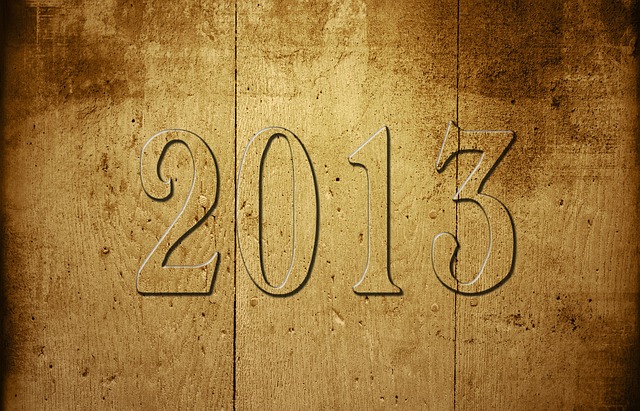Fitness, recovery and the 2013 Boston Marathon
E xperience gives me pause.
xperience gives me pause.
(Editor’s note: This was originally published in April of 2013)
These are interesting times for me. In two weeks I’ll be running my 15th Boston Marathon. I’m happy to be running after a fitful 18 month hiatus due to plantar Fasciitis.
I’ve been training since December as I slowly build back my strength and tolerance and avoid making the foot mad again.
I started from zero in the fall. Sure, I was swimming, biking and lifting weights, but I wasn’t running. As we all know running is a very specific exercise.
After a few attempts to come back over the year I gave up. It seemed like any significant mileage or intensity would cause my heel to become painfully inflamed. My orthopedic surgeon was out of ideas and out of treatment options.
I just stopped running and more importantly stopped worrying about it. They say you can’t start to heal until you reach bottom. I guess that was the case.
The heel pain never went away but it receded to a 1-2 on the ten scale and I was, almost accidently, able to start doing some short, easy runs. I had no expectations. But, It wasn’t getting worst so I started doing longer runs.
Now, in a few short months, we have worked our way up to 20 miles at time on the road without undue pain.
Being the incorrigible animal that I am, somewhere towards the end of February I started to think about the possibility of not just making it to the starting line at Boston again, not just comfortably running my favorite marathon, not just racing it well, but with the ultimate hubris, I began to think qualifying times.
I haven’t run more than 3 days a weeks and haven’t been on the track for speedwork at all. I have done some tough hill workouts and some long road tempo – and the heel has stayed at that 1-2 level. I believe the activity has actually helped it heal. But, of course I would believe that.
Now here I am staring into the grinning teeth of the granddaddy of all marathons.
It is an old acquaintance of mine. The first four or five Bostons that I ran were during my initial return to racing when I was rediscovering the strength in my body that I had put away after high school.
These first few races were battles. Mano-a-marathon, knockdown, drag out battles to the finish. I set my marathon PR at Boston in these years, but every time I ran, it damn near killed me. There was always suffering and staggering at the end. Sometimes I made it, most times I ended up in that long death shuffle.
When I got past the first half dozen or so I decide not to fight with Boston any more. I would qualify in the fall and run Boston in the spring. I would train enough to respect the race but not race it to qualify. Choosing instead to enjoy the race for the event and spectacle of running that it is.
Some of those summer-through-fall campaigns were multi-marathon odysseys where I would qualify by a whisker, by the skin of my teeth. Real adventures. Something Don Quixote would be proud of.
The last few years, before my injury the option of qualifying in the fall went away as the world began to crave and overwhelm our little, local marathon. In these years I didn’t train for Boston specifically but ended up qualifying incidentally by coincidently being in shape for something else at the right point in time.
But now with this new injury knocking almost 2 years out of my running life and the clock of life itself clicking inexorably ahead past my fiftieth year I am once again in unknown and uncharted territory. There be dragons here.
The way training is supposed to work is that you stress the body with calculated workouts and the body responds with the training effect – and you get stronger and faster.
That’s the way it’s supposed to work. That’s not how it’s been working for me over the last couple months.
I made rapid improvement when I started up again but that has stalled out as I’ve peaked for Boston.
The pace and time that I need to qualify at Boston this year is not onerous. I am, in fact in one of the easier age positions. But I just can’t seem to find that pace and the comfort level in the race to hold it for 26.2 miles.
I have put in some good miles. I have run 2 twenty-mile races, a sixteen mile race and a dozen or so long training runs with purpose. I have seen signs of life in these races and runs. Moments when I felt the strength and the pace rolling off comfortably, like I remember, but I haven’t found consistency. And that scares me.
In my most recent race, the Eastern States 20 miler, I went out relaxed and felt strong. I felt extremely comfortable at 10-15 seconds faster than target marathon race pace. But, I ran out of gas at 12 miles and I’m not sure I could have tacked another 10k on to that effort the way my leg muscles were acting up.
I may have gone out too fast but the slower pace did not feel comfortable. I’m not sure if it would have made a difference.
At this point I’ve got two challenges to racing Boston. First I don’t feel like I have a sustainable relaxed pace I can run at. A conversational pace. A cruising pace. Second my legs don’t seem to be able to sustain any pace for more than a half marathon before they start talking back.
Add to this that I’ve still got an extra 10 pounds of belly fat that did not burn off and I’m not confident. There is no doubt that I can run it and finish but I am hesitant to attack it, to grapple with it.
The way I think about it, Boston can be cut into three sections. The first 16-17 miles are rolling down hills out of Hopkinton. 17 – 21 are the hills. 22 in is the long grind to the Pru.
I have tested every strategy on this course. The best strategy, I have found, is to hold back for the first 17. Usually it takes enormous effort to hold back. Then when you hit the hills you can either attack them or run them steady. And finally when you come off the back of the hills you want to have something left to take advantage of the easier running.
It all depends on being able to hold back and run effortlessly on the first 17.
Without a comfortable pace in my tool kit, what the heck do I do? How do I hold back when I can’t find that comfortable pace that is slow enough to relax but not too slow to lose time?
Even if I’m able to nurse this fragile mess of a pace into Newton what do I do on the hills? Struggling on the hills is worth 2 minutes at least. Fighting the hills can mean death-marching those last 5-6 miles into the Pru.
If I get through the hills what will I have left to take advantage of the fast bits?
Any way I add it up it seems to equal me walking the last 10k.
But one can’t forget the marathon miracle. This is the phenomena of showing up uncertain of your fitness and being buoyed by the energy of the race to excel. I do believe in this and I have experienced it myself.
Based on my 20 mile times I’m only 5-10 seconds off of a qualifying pace. Given this you could argue that a well-executed race in combination with the marathon miracle could slide me under the wire. I sure do miss those 59 seconds.
But this is Boston. Boston eats the unprepared alive and spits them out. I know. I have the chew marks on my ass.
What should I do? Try to race it? Go out at or near pace and try to conserve enough energy and hope to survive the hills? Or should I just take what I’ve got and go enjoy the day. Shake hands and kiss babies. Leave the watch at home.
It’s a pickle.
Whatever happens I will show up reasonably fit at the starting line and I will respect my great adversary and friend – the Boston Marathon. For that opportunity I am grateful. Maybe there are one or two more epic adventures left in this bag of bones.

